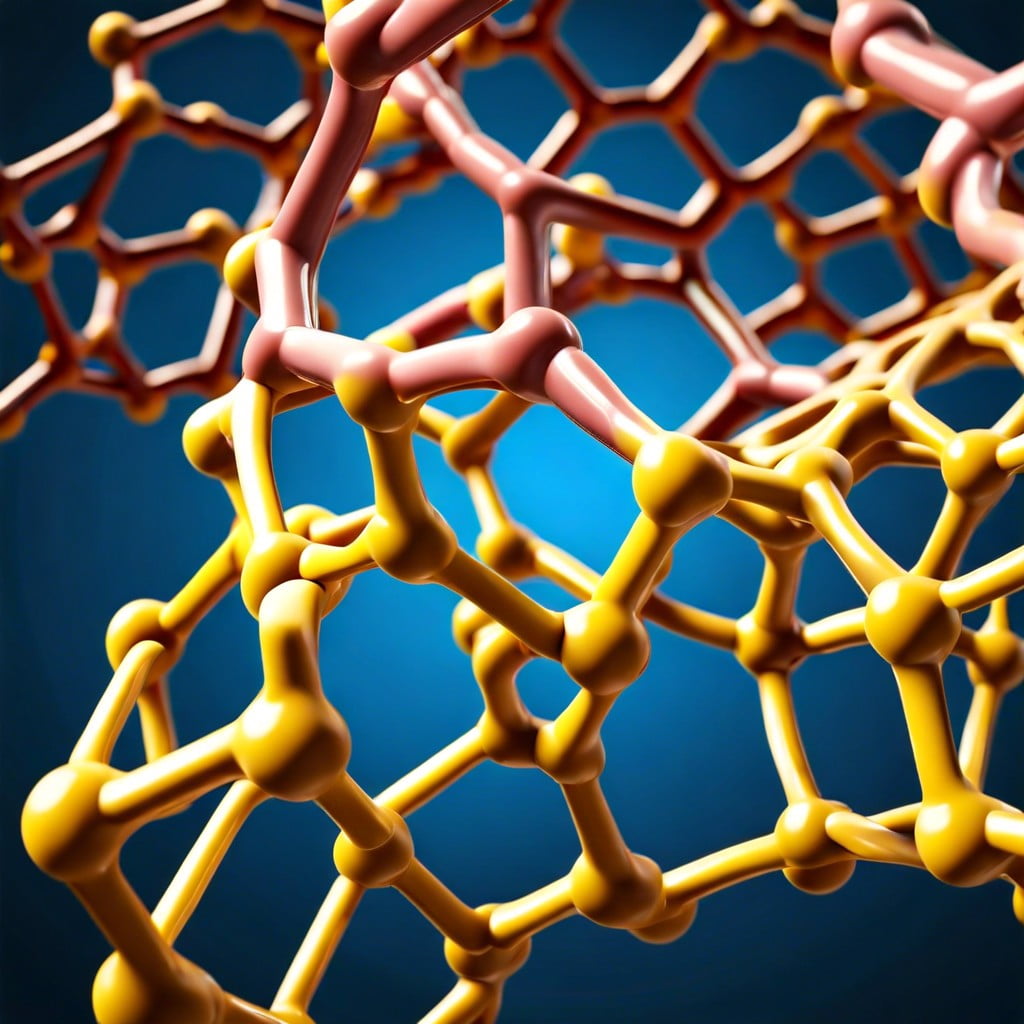Discover how carbohydrates are structured from simple sugars to complex polymers and understand their role in biology.
Key takeaways:
- Monosaccharides are simple sugars and the building blocks of carbohydrates.
- Polysaccharides are complex carbohydrates formed by linking monosaccharides.
- Polysaccharides like starch and glycogen store energy in plants and animals.
- Cellulose and chitin provide structural support in plants and arthropods.
- Polysaccharides are biodegradable and environmentally friendly.
Carbohydrates: Monomers and Polymers

Monosaccharides are the simplest form of carbohydrates, often referred to as simple sugars. They are single-molecule structures that serve as the essential building blocks for larger carbohydrate molecules. Common examples include glucose, fructose, and galactose, each with its own unique structure and role in energy metabolism.
Polysaccharides, on the other hand, are large, complex molecules composed of long chains of monosaccharide units linked together. These can be straight or branched chains resulting in a variety of polymers with different properties and functions. Starch, cellulose, and glycogen are key examples of polysaccharides that play vital roles in energy storage and structural support in plants and animals.
The transformation from monomer to polymer occurs through a process known as dehydration synthesis, where water is removed as monosaccharides link to form disaccharides and eventually polysaccharides. Each bond formed during this process stores energy, making polysaccharides an efficient energy source that can be broken down when needed.
Monosaccharides: Basic Building Blocks
Monosaccharides are the simplest form of carbohydrates, consisting of single sugar molecules. Their structure determines their properties and functions. They serve as the fundamental units for constructing more complex carbohydrates.
Glucose, fructose, and galactose are common examples, each with a distinct role in energy provision and metabolism. These single sugars can also combine to form disaccharides, such as sucrose, found in table sugar, through a process known as glycosidic bonding.
Understanding monosaccharides is key to unraveling the complex web of carbohydrate functions in living organisms.
Polysaccharides: Complex Carbohydrate Structures
When multiple monosaccharides link together, the result is a polysaccharide. These large, often branched, molecules serve various roles from structural support to energy storage.
Here are key points to understand about these complex carbohydrates:
- Chain Formation: Monosaccharides connect in lengthy chains through glycosidic bonds, which form after a dehydration reaction between hydroxyl groups.
- Structural Variety: These molecules vary widely in length, branching, and monosaccharide components, leading to diverse structures with unique properties.
- Starch and Glycogen: Two polysaccharides that function as energy reserves in plants and animals, respectively, they’re compact and can be broken down when energy is needed.
- Cellulose and Chitin: Serving a structural role in plants and arthropods, these polysaccharides form rigid frameworks due to the way their monosaccharide units are bonded.
- Biodegradability: Unlike many synthetic polymers, polysaccharides are typically biodegradable, making them more environmentally friendly in certain applications.
Understanding these complex structures helps in grasping how carbohydrates fulfill critical roles in biological systems and can be leveraged for various technological applications.
Dehydration Synthesis: Building Polymers From Monomers
Dehydration synthesis, also known as condensation reaction, is a chemical process where monomers, such as monosaccharides, join to form polymers. Here’s how it happens:
- During the reaction, a water molecule is removed (hence ‘dehydration’).
- This removal of water allows a bond to form between two monosaccharides.
- An enzyme typically facilitates the reaction, ensuring the proper monomers are connected.
- The process is reversible. Polymers can break back into monomers through hydrolysis, where water is added.
This mechanism is not exclusive to carbohydrates; it’s a common method for constructing various types of biological polymers.
Functions and Applications of Polysaccharides in Nature
Polysaccharides serve vital roles across various natural processes. Starch, a polysaccharide found in plants, is a major energy reserve. When a plant requires energy, it breaks down starch into glucose, the simpler sugar that fuels cellular activities. In animals, glycogen serves a similar purpose, storing energy primarily in the liver and muscles. When energy is required quickly, glycogen is rapidly converted back into glucose.
Cellulose, another polysaccharide, is integral to plant structure, providing rigidity to cell walls. This robustness is essential to plants, maintaining their upright form and facilitating growth.
Chitin, found in the exoskeletons of arthropods, offers protection and support, much like cellulose does for plants. This substance not only safeguards insects and crustaceans from environmental threats but also contributes to their mobility by providing a strong yet flexible framework.
In summary, polysaccharides are indispensable to both plants and animals. They are not just energy stores but also fortify structure and aid in the protection of organisms within their respective environments.
Recap




